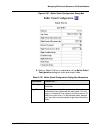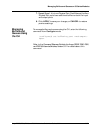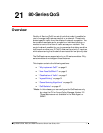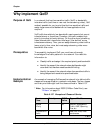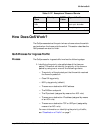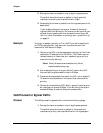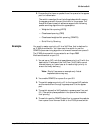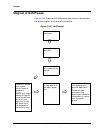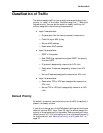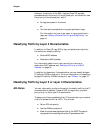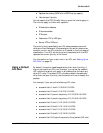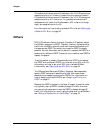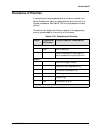
-4
Chapter
Avaya P550R, P580, P880, and P882 Multiservice Switch User Guide, v5.3.1
2. Storing the frame or packet in one of eight ingress queues.
The switch stores the frame or packet in the queue that
matches the priority that was identified in Step 1.
3. Forwarding the frame or packet from the ingress queue to its
destination.
If you enable policing for the queue, the switch forwards
ingress traffic that falls within the maximum bit rate that you
set and drops ingress traffic that exceeds the maximum bit
rate. For more information on policing, see “Ingress Policing”
on page 31.
Example You want to assign a priority of 5 to a VoIP flow that is destined to
an IP 600 phone switch. You also want to police the port that
receives the VoIP data to 5 Mbps.
1. You set up an ACL rule that associates a priority of 5 with the
destination IP address of the VoIP flow. (VoIP traffic cannot
tolerate latency or frame loss, so it needs a high priority to
ensure its timely delivery.)
*Note: Priority 5 serves as an example only. Actual
implementations may vary.
2. You enable policing on the port that will receive the VoIP
flow and set the guaranteed bit rate to 5 Mbps.
3. The switch stores packets that match the ACL rule in queue 5.
(The switch stores packets in the queue that matches their
priority.)
4. The switch forwards the VoIP traffic in queue 5 as long as its
bit rate does not exceed 5 Mbps. If the bit rate of the queue
exceeds 5 Mbps, the switch drops the excess traffic.
QoS Process for Egress Traffic
Process The QoS process for egress traffic involves the following steps:
1. Storing the frame or packet in one of eight egress queues.
The switch stores the frame or packet in the queue that
matches the priority that was identified on the ingress port.




